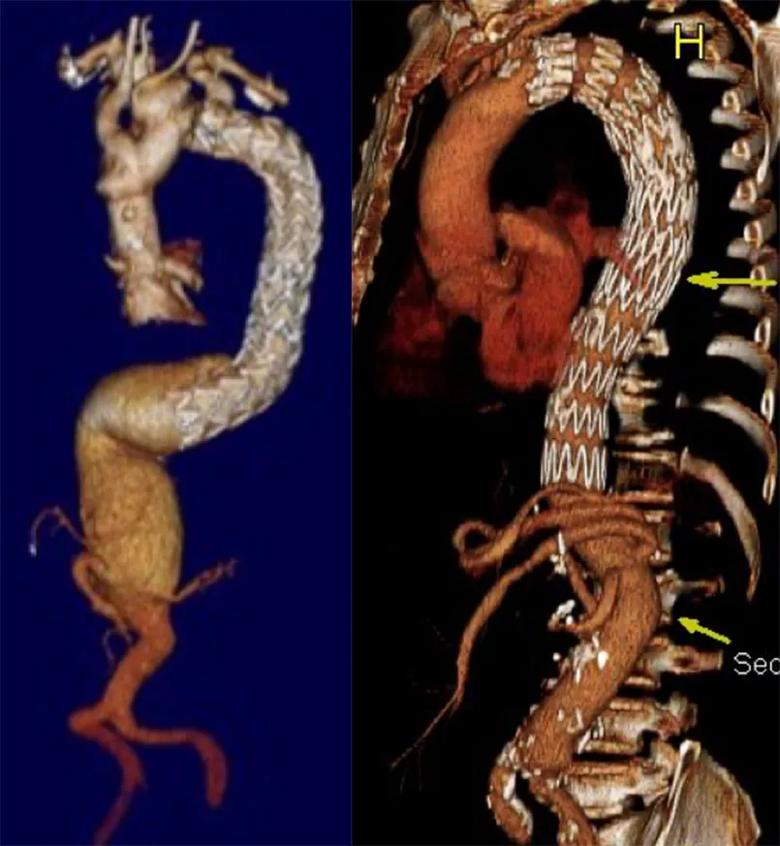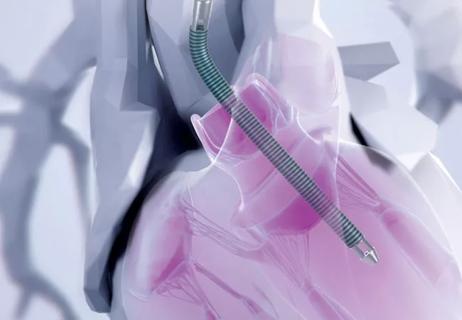A staged hybrid strategy respects the chronic nature of thoracic aortic disease
An ultra-hybrid approach to thoracoabdominal aortic aneurysm (TAAA) repair is a feasible and safe intervention that is coming into its own, thanks in part to the success of thoracic endovascular aneurysm repair (TEVAR) in recent years.
Advertisement
Cleveland Clinic is a non-profit academic medical center. Advertising on our site helps support our mission. We do not endorse non-Cleveland Clinic products or services. Policy
That’s a key takeaway from a poster presentation by Cleveland Clinic cardiothoracic surgeon Eric Roselli, MD, at the 2021 annual meeting of the American Association for Thoracic Surgery (AATS) — the largest experience with the procedure reported to date.
“As TEVAR has been applied to more and more people with thoracic aortic disease, and as medical therapy has improved, we see more patients survive to the point where their disease progresses and they need treatment that goes beyond what was addressed with an earlier stent graft in the thoracic aorta,” says Dr. Roselli, Cardiac Surgery Director of Cleveland Clinic’s Aorta Center. “In many cases we can extend and complete the repair through an open operation in which we sew an additional graft into the prior stent graft, resulting in what we call an ultra-hybrid repair with open thoracoabdominal completion after descending stent grafting.”

Images from two key points in ultra-hybrid repair: post-TEVAR (left) and post-TAAA completion (right).
He notes that the above scenario is one of several situations in which the procedure is offered. Another scenario involves patients with extensive aortic disease affecting everything from the aortic root through the descending aorta. In such cases, an open procedure with sternotomy is performed first to enable root repair and frozen elephant trunk repair. “We do the next part endovascularly with TEVAR through the groin, and then we give the patient a break and bring them back later for open thoracoabdominal completion,” Dr. Roselli explains.
Advertisement
A third scenario involves patients who present with considerable aortic disease but in whom the need for complete repair is not pressing. In these cases, part of the descending aorta is repaired with a stent graft with a plan to later complete the repair with an open operation as the disease progresses, thus buying the patient time before undergoing such major open surgery.
Regardless of the scenario, all types of ultra-hybrid repair have two things in common: the combination of endovascular and open components as well as some degree of staging, although the interval between stages can range from a week to more than a dozen years.
Staging is important for limiting trauma and its associated risks, particularly neurologic risks. “Staging the repair allows the spinal cord to adapt to the new anatomy and blood flow pattern, thereby reducing the risk of spinal cord injury, which is elevated with open repair of the descending aorta,” Dr. Roselli says. “Also, staging the repair into endovascular and open components shifts the large open repair to a lower part of the chest, which reduces trauma to the lungs. That’s important because many patients with extensive aortic disease have chronic obstructive pulmonary disease or other pulmonary risks.”

Successive stages of the ultra-hybrid approach to thoracoabdominal aortic aneurysm repair.
Dr. Roselli and his colleagues have gleaned these insights on ultra-hybrid repair from the series of 92 patients he presented at the AATS meeting, representing the full Cleveland Clinic experience with the procedure from 2006 through the end of 2020. “This is the world’s largest experience by far,” he says.
Advertisement
Overall, the patients were relatively young, with a mean age of 57.6 years. About two-thirds were men, and about one-third had a known connective tissue disorder, most often Marfan syndrome or Loeys-Dietz syndrome. Indications for repair were predominantly chronic dissection (63%) or aneurysm (30%), with the remainder of patients having an endoleak or acute type B dissection.
Across the cohort, first-stage endografting involved TEVAR in 75% of patients, frozen elephant trunk repair (FET) in 5%, and both TEVAR and FET in 20%. Distal anastomosis at the TAAA was infrarenal in 58% of cases, at the bifurcation in 29%, iliac in 8% and suprarenal in 5%.
In-hospital outcomes were as follows:
“These are reasonable outcomes in view of what an extraordinarily high-risk population this is — people who need to have their whole aorta replaced,” Dr. Roselli notes.
Over the longer term, survival at five years was 71% and freedom from reoperation at four years was 65%. “We found that renal dysfunction was associated with a higher risk of death,” Dr. Roselli says.
Also notable was a strong trend toward more ultra-hybrid repairs over time, with annual volumes steadily rising from one case in 2006 to 19 cases in 2020. “These cases now represent about half of all thoracoabdominal aneurysm repairs we perform annually,” Dr. Roselli observes.
While the above results are being prepared for journal publication, the Cleveland Clinic team hopes to soon perform a matched comparison between its ultra-hybrid repair patients and similar historical patients who have undergone open type 2 TAAA repair in terms of mortality, renal dysfunction, spinal cord injury and other outcomes. “There’s not a perfect comparison group,” Dr. Roselli says, “but we think this is the most reasonable match.”
Advertisement
The team also expects to soon use a new surgical graft with a cuff specially designed to address the size discrepancies with previously placed stent grafts that are frequently encountered in these ultra-hybrid repairs. Terumo Aortic developed the new cuffed graft with specifications based on Cleveland Clinic patient data. It is expected to be cleared for commercial use later this year.
Dr. Roselli says only a handful of U.S. centers have performed more than a few ultra-hybrid TAAA repairs and that it’s worth directing likely candidates to one of these experienced centers, in view of the high risk of this patient population.
“Candidates would include almost anyone with a previous thoracic stent graft that’s well seated and who has progressive aortic disease beyond the graft,” he notes, adding that the best candidates may be those with previous open surgery in the left chest and patients with moderate but not severe lung compromise. “But it’s generally applicable to most patients who have had earlier endovascular thoracic aorta treatment and now have progressive pathology in the descending aorta.”
Recognizing the chronic nature of thoracic aortic disease is key, he emphasizes. “Once a patient has an aneurysm or dissection, it’s important to realize their thoracic aortic disease is not going away,” he says. “My top advice to providers is that lifelong regular imaging follow-up is absolutely critical for all patients with thoracic aortic disease. Even if you’ve fixed an aneurysm or dissection and it looks great at first, recognize that the disease is apt to progress as the patient survives. Everyone needs lifelong imaging.”
Advertisement
Advertisement

30-year study of Cleveland Clinic experience shows clear improvement from year 2000 onward

Launch of the tool promises to reshape quality assessment across the specialty

Cleveland Clinic series finds favorable long-term results with this high-risk operation

Surgeons credit good outcomes to experience with complex cases and team approach

Study indicates lower in-hospital mortality and better long-term survival

20 years of Cleveland Clinic experience in ~500 patients with proximal aortic aneurysm or dilation

Why and how we’re using robotic assistance for qualifying CABG candidates

Multicenter pivotal study may lead to first endovascular treatment for the ascending aorta